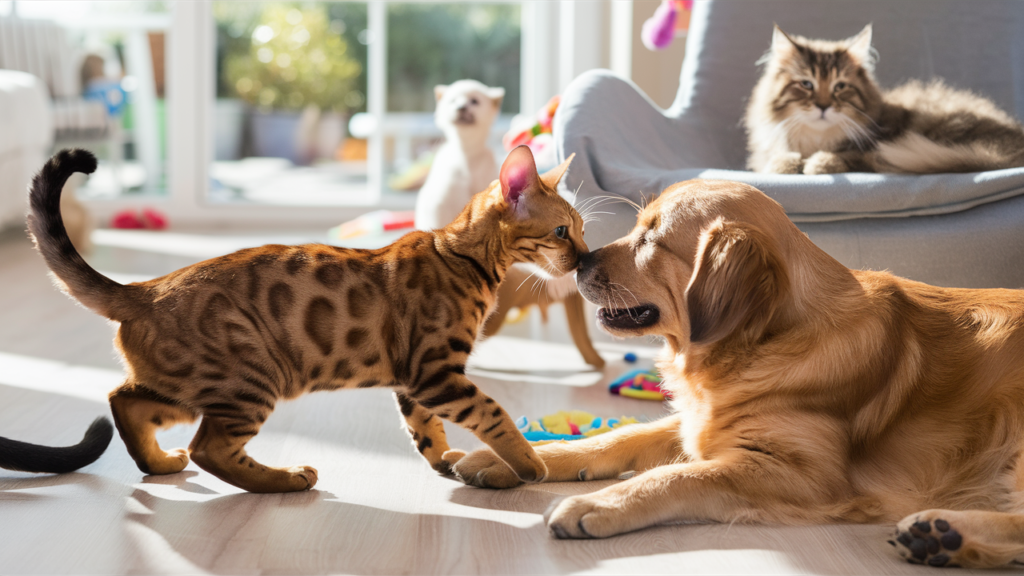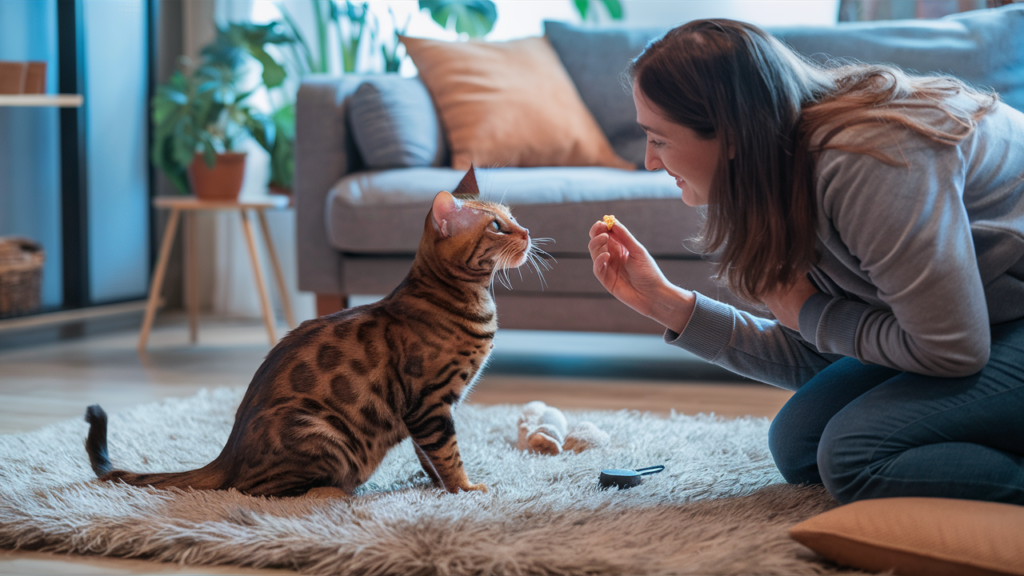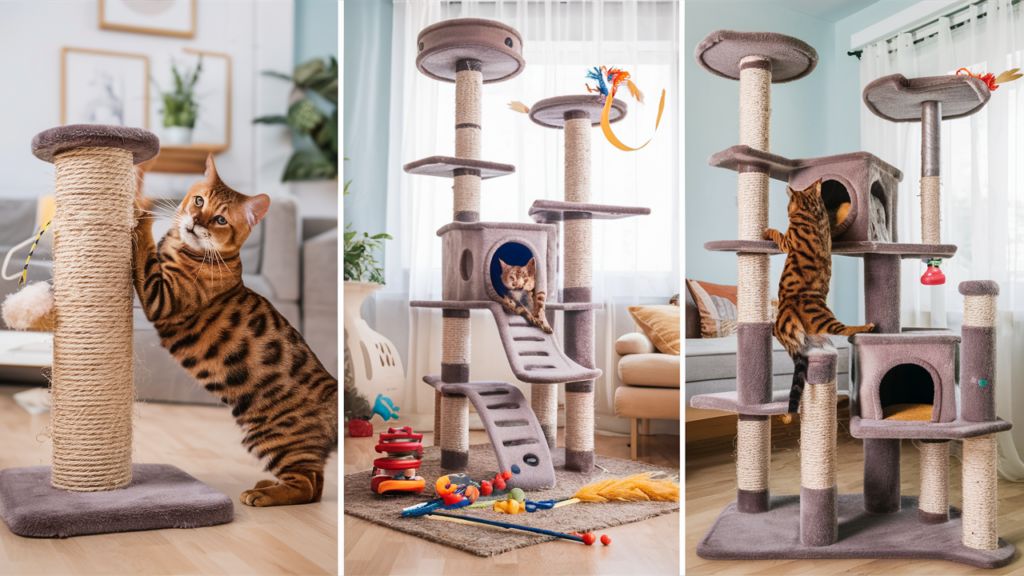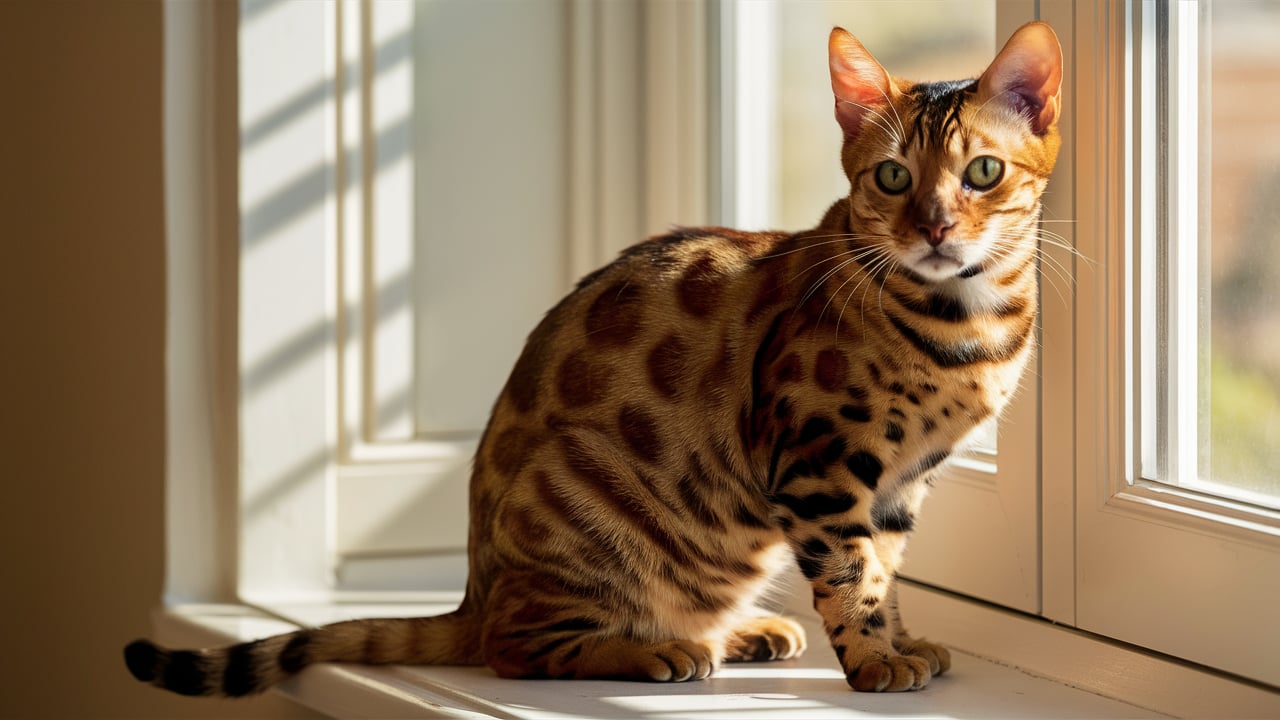Introduction
Bengal cats are a fascinating species that are well-known for their colorful personalities and exotic appearance. Bengal cats, which came from a hybrid of domestic cats and Asian leopard cats, are unique in both appearance and temperament. The truth is more complex, despite the fact that their ancestry may give them the appearance of being wild and possibly dangerous pets. In this article, we’ll delve into the nature of Bengal cats to answer the question: Are Bengal cats dangerous?
Understanding Bengal Cats
Origin and Background
The Bengal cat breed was developed in the United States during the 1970s when breeders crossed the wild Asian leopard cat with various domestic cats. The goal was to create a breed with the exotic appearance of a wild cat and the temperament of a domesticated feline. Bengals are now recognized by several cat registries and are popular for their striking coat patterns and active personalities.
Physical Characteristics
Bengals are muscular cats that range in size from medium to giant. Their most distinguishing feature is their coat, which resembles that of a leopard. The coat is short and dense, with a glittering quality that gives it a sheen in the sunlight. Bengals come in various colors, including brown, snow, and silver, and their coats can have rosettes, spots, or marbled patterns.
The Temperament of Bengal Cats
Typical Behavior
Bengal cats are famous for their sharp minds, great curiosity, and endless energy. They enjoy energetic, enjoyable activities that require both mental and physical effort. Bengals are very vocal creatures that can create a variety of noises to connect with their owners.
Interaction with Other Animals
Bengals generally get along well with other pets if they are introduced at a young age and properly socialized. They have a natural curiosity and can be quite affectionate with other animals in the household. However, their hunting instincts may make them less suitable for homes with small, prey-like pets.

Interaction with Humans
Bengal cats are affectionate and form strong bonds with their human companions. They enjoy being involved in daily activities and are known to follow their owners around the house. Bengals are also good with children, although they prefer playtime that aligns with their energetic nature.
Potential Risks of Owning a Bengal Cat
Aggressive Tendencies
Like all cats, Bengals can exhibit aggressive behavior if they feel threatened or are not properly socialized. Bengal cat aggression, however, is not inherently greater than that of other breeds. Most behavioral issues can be managed through proper training and socialization.
Precautions for Families with Children
Families with young children should take precautions when introducing a Bengal cat into the home. Teaching children how to interact with pets respectfully and ensuring supervised play can help prevent any potential issues. It’s also essential to provide the cat with a safe space where it can retreat if it feels overwhelmed.
Training and Socialization
Importance of Early Socialization
Early socialization is crucial for Bengal cats to ensure they grow into well-adjusted adults. Exposing kittens to various people, animals, and environments helps them develop confidence and reduces the likelihood of fearful or aggressive behaviors.
Training Techniques
Bengals are highly trainable due to their intelligence and eagerness to learn. Positive reinforcement techniques, such as rewarding good behavior with treats and praise, are effective in training Bengal cats. Teaching them simple commands like “come” and “sit” might also be helpful.

Health and Wellness
Common Health Issues
Bengals are generally healthy cats, but like all breeds, they can be prone to certain health issues. Some of the common health concerns include hypertrophic cardiomyopathy (a heart condition), progressive retinal atrophy, and hip dysplasia. Regular veterinary check-ups and a healthy diet are essential for maintaining their health.
Keeping Your Bengal Cat Healthy
Providing a balanced diet, regular exercise, and mental stimulation are key to keeping a Bengal cat healthy. Ensuring they receive routine veterinary care and vaccinations will also help prevent health problems and detect any issues early.
Providing a Safe Environment
Creating a Stimulating Home
Bengals do best in settings that provide lots of chances for fun and discovery. Providing scratching posts, climbing trees, and interactive toys can keep them entertained and prevent destructive behaviors.

Avoiding Common Household Hazards
To keep your Bengal cat safe, ensure your home is free of common hazards such as toxic plants, small objects that can be swallowed, and open windows or balconies without proper protection. Regularly checking for potential dangers can help prevent accidents.
Legal Considerations
Ownership Laws and Regulations
Before adopting a Bengal cat, it’s important to familiarize yourself with the laws and regulations regarding exotic pets in your area. Some regions have restrictions on owning hybrid animals, so checking local legislation is essential.
Permits and Licensing
In some areas, owning a Bengal cat may require a permit or license. Ensuring you have the necessary documentation before bringing a Bengal into your home will help avoid legal issues and ensure the welfare of your pet.
Conclusion
Bengal cats are not inherently dangerous, but they require proper care, socialization, and training to thrive in a home environment. With the right approach, they can be loving and affectionate companions. By providing a safe and stimulating environment, understanding their needs, and being aware of their behavior, you can enjoy a rewarding relationship with your Bengal cat.
Frequently Asked Questions
Can Bengal Cats Be Left Alone?
Being friendly creatures, Bengal cats struggle when they are left alone for long periods of time. They require companionship and stimulation to prevent boredom and potential behavior issues. If you have a busy schedule, consider having another pet or hiring a pet sitter to keep your Bengal company.
Are Bengal Cats Hypoallergenic?
While no cat is truly hypoallergenic, some people with allergies may find Bengal cats less triggering due to their short, fine coats. Reduced allergies in the house can also be achieved by routine cleaning and grooming.
How Do Bengal Cats Communicate?
Bengal cats are vocal and use a range of sounds to communicate with their owners. They may chirp, trill, or meow to express their needs or emotions. Understanding their communication style can help strengthen the bond between you and your Bengal.
